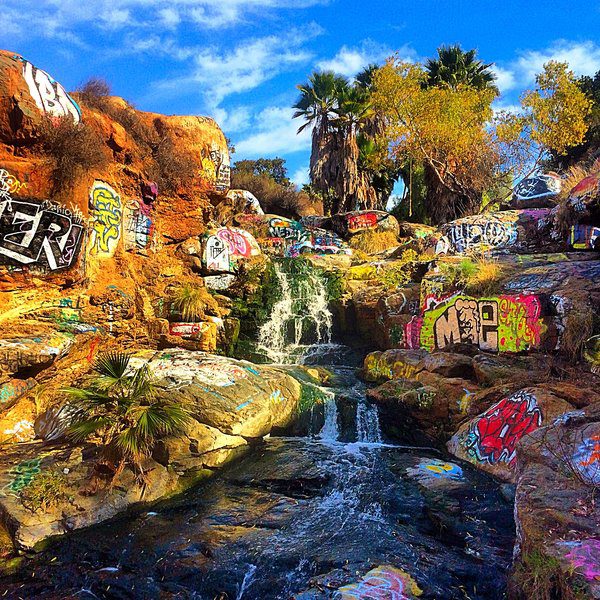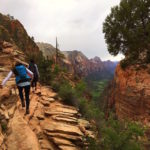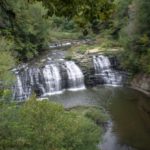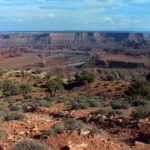Foot traffic is increasing in National Parks. In 2015 over 305 million people visited National Parks in the United States, breaking 2014’s previous all-time visitation record. This number is only expected to rise in the coming years, making it a top priority for park rangers and officials to ensure visitors stay safe at the parks. We can help achieve this by following common sense, and adhering to this list of 10 things not to do in a national park.

10 Things Not to Do in National Parks
Don’t Disrespect the Wildlife
It is more likely than not you will encounter wildlife when visiting a National Park. Your odds of this increase even more if you plan on doing any sort of hiking. You might encounter Bison at Yellowstone, bears at Yosemite, or a plethora of squirrels at Zion. No matter what type of animal you happen to see during your visit it is crucial to let them be. Wildlife is just that: wild. Try to pet an animal and you may end up their lunch. Try to feed these animals and you’ll encourage them to be more aggressive around humans or neglect the food they are accustomed to eating.
Such was the case in 2013 when a photographer in the Great Smoky Mountains National Park was attacked by an elk. Officials concluded had likely lost its fear of humans after being fed by visitors. Consequently, the animal had to be euthanized. because of the incident.
If a hefty citation doesn’t deter you, the fact that you will be endangering yourself and the animal should.

Don’t Take Selfies in Compromising Places
Take a look at your Instagram feed and you’ll see it’s no secret that selfies are more popular than ever. But, flower crowns and rainbows spewing out of mouths aren’t enough. Some people feel the need to take it to the next level to impress their followers. Such has been the case with people visiting National Parks, documenting their close encounters with wildlife or near edges of staggering cliffs. The problem with turning your back to reality is you are vulnerable. One wrong step and you could plummet to your death. One quick picture and you could be attacked by a bear.
In 2015, a 43-year-old woman was gored when she and her daughter turned their backs to bison, which were about 6 yards away, to take a picture with them. One of the bison wasn’t feeling photo-ready and ended up attacked the woman on her right side.
Don’t Deface Nature
It should be common sense or just simply being respectful, yet National Parks across the United States are defaced with graffiti and carvings countless times year over year. Earlier this year, Casey Nocket was banned from all national parks and forced to pay a fine after defacing rock formations with graffiti and posting images of her damage on Instagram. In turn, the National Park Service had to put in ample time to restore the rock formations to their natural state with extensive clean-up efforts.
Even celebrities are to blame for defacing public lands. Former Disney Channel star Vanessa Hudgens was recently condemned for carving into Bell Rock near Sedona, Arizona. Swedish-Portuguese artist Andre Saraiva also was busted for defacing Joshua Tree National Park.

Don’t Leave Your Trash Behind
Follow the golden rule of nature and pack out what you pack in. It may seem tempting to leave behind a piece of your gum wrapper or a plastic water bottle behind when there is no trash in site. However, even this simple act could lead to adverse consequences on both nature and wildlife.
The process of removing every single piece of trash left behind at national parks is an arduous and extremely costly process. Jim Evanoff, environmental portection specialist for Yellowstone National Park reports they spend half a million dollars each year to remove 3,000 tons of trash . The less visited Denali National Park reports spending about $75,000 each year getting rid of garbage left behind by visitors.
Don’t Take Mementos
There are many interesting rocks, petroglyphs, artifacts, flowers, and other pieces of nature to be found in national parks. It may be tempting to take one of these back with you as a keepsake. After all, taking one small rock won’t make a dent, right? If all 305 million national park visitors thought this same way there could be damage beyond repair.
A young girl named Evie felt so much remorse after she took two sticks from Yosemite National Park, she felt prompted to write a letter and sent back the sticks to the park. Whether her parents encouraged her to write the letter or she did so out of her own free will, it is a small reminder that we need to all be as concious as Evie.
“Take only pictures, leave only footprints.”
Don’t Speed
You may be eager to get from one spot to the next, but speeding is not the answer in national parks. Not only do you endanger yourself but you also endanger the wildlife that frequently cross the road. To put this into perspective, between 1989-2003, 1,559 animals were killed by speeding on Yellowstone National Park roads. In Saguara National Park 51,000 vertebrates are killed in and around the park by automobiles each year. Obeying the rules of the road can greatly decrease these fatalities.
Additionally the citation for speeding in a National Park is a federal ticket and can lead to federal charges if not handled properly. So think twice the next time you consider going 10 over the speed limit. Besides, the views are plentiful and deserve to be taken in.

Don’t Go Off Trail
Sometimes it’s best not to take the road less traveled. Such is the case when hiking at National Parks that face a multi-billion dollar maintenance backlog. In 2014, this backlog came in at $12 billion . Park Service Director Jonathan Jarvis said the annual bill for maintaining National Parks across the United States is nearly twice as much as appropriated by Congress, and park fees aren’t nearly enough to make up for this loss. With such a large deficit it’s important to stick to the main trails rather than risk damaging the surrounding nature.
Additionally, by veering off trail you run the risk of getting lost and increase your risk of encountering wildlife. Stay safe and protect the environment by simply sticking to the marked trails.
Don’t Forget to Stay Fueled
With the serene beauty that surrounds you at any of America’s National Parks, it can be easy to get lost in the scenery and neglect your needs. No matter how stunning that mountain range is in the distance, it’s important to keep your body hydrated and fueled. While every body type and size requires a different amount of water to stay hydrated, Camelbak recommends consuming 27 oz of water every hour for average-sized females and 30 oz for males. For high intensity hikes, the number increases to 34 oz for average-size females and males.
Along with consuming enough water, you’ll also want to make sure your body is fueled with enough food. Carrying protein-rich snacks can help give you the energy you need to climb to the top of that peak. Some snacks I recommend include nuts, protein bars (Quest is my fave), beef jerky, tuna and crackers, and dry fruit.

Don’t be Disrespectful to Other Hikers
Yellowstone receives an average of 682,730 visitors in the month of August alone. It is more than likely no matter what month you visit a national park you’ll be sharing the trail with other people. In order to ensure everyone’s experience is enjoyable, it is important to be respectful to other visitors. Respect can be shown as simply as sharing the trails, picking up your trash, or using headphones to listen to music.
You know that new Rihanna song you can’t stop blasting in your car? Save it for your car.
Don’t Leave Valuables in Your Car
Remember earlier when we talked about the girl who intentionally spray painted rocks in national parks for social media attention? Unfortunately there are a few bad apples out there that can ruin the fun for everyone. Which is why you’ll want to take extra precaution when it comes to your vehicle. In just one day in August 2016, two vehicles were broken into in the same parking lot in Rocky Mountain National Park. Purses containing credit cards were stolen and used in local businesses after the break in.
You’ll likely be away from your vehicle for hours, taking in the views and exploring different parts of the park. This is the ideal time for car jackers to scope out what you have to offer in plain sight. Instead of ending your day on a sour note, take a few minutes before you head out on your hike to ensure nothing valuable is out in the open.
Ready to plan your next trip? Following these 10 things not to do in National Parks will ensure it is both rewarding and successful. Happy trails!



 Hiking Blunders: Avoid Wild Animal Selfies
Hiking Blunders: Avoid Wild Animal Selfies

